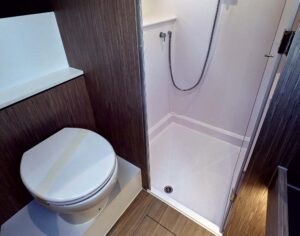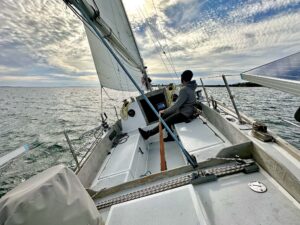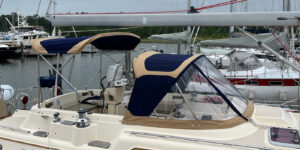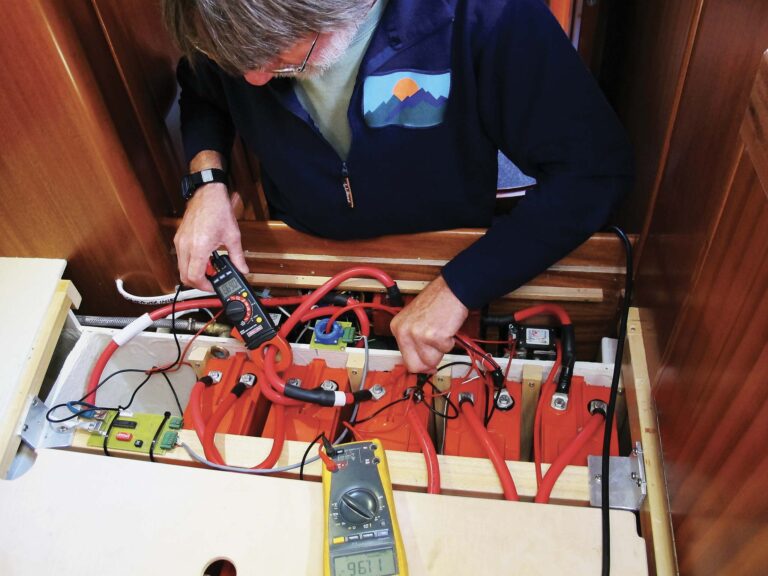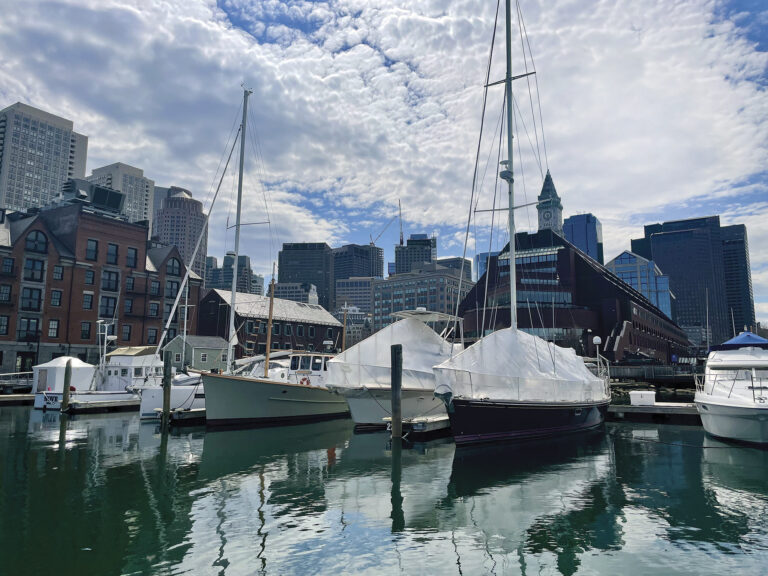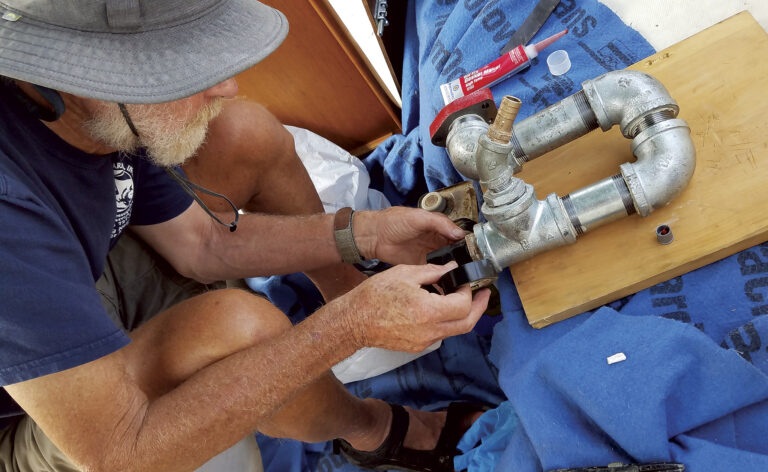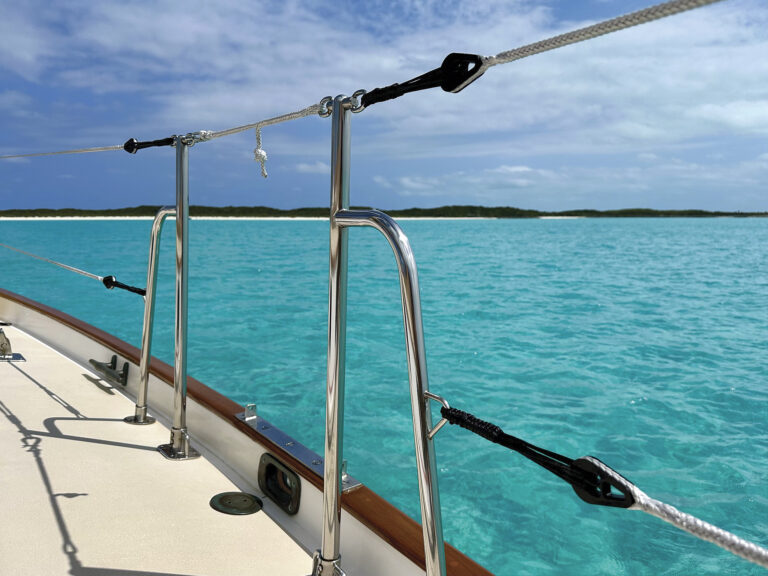Diesel mechanics is not a difficult subject. In fact, all owners of diesel-powered boats can—and should—learn the fundamentals of operating and maintaining their engines. To run well, a diesel engine requires clean fuel, clean oil, and a lot of air. Routine maintenance will virtually guarantee years of trouble-free service and will keep your busy mechanic at bay.
How a diesel engine works, and why in many cases it is superior to a gasoline engine as a marine power plant, will not be discussed here. That has been well covered elsewhere. What I will describe are 10 things every diesel mechanic wishes every boatowner knew about diesel engines. As one mechanic told me, “A knowledgeable boatowner makes my job easier. When I receive the call, the owner can report meaningful symptoms, can explain the engine’s relevant history, has probably kept up with maintenance routines, and won’t give me grief when I explain that the engine may need a set of new injectors, a new circulating pump, or a purging of the entire fuel system.”
Here is the list, in no particular order of priority.
1. Don’t baby the engine.
Diesels don’t like to idle in neutral or run in gear at low speeds; they do like to work hard under load. A diesel engine that is properly matched to its boat can run at its cruising rpm (the “sweet spot”) for hour after hour, day after day. What’s the cruising rpm? Generally, the sweet spot is approximately 75 to 80 percent of the maximum rpm as defined in the owner’s manual. Running at cruising rpm after just a few minutes of initial warmup, the engine should keep the boat moving at a reasonable speed with minimal noise and little harmonic vibration. Running in the sweet spot also maximizes fuel efficiency—it runs hot enough to be at its most efficient operating temperature, but is not being overworked—and increases the engine’s lifespan.
However, the sweet spot will vary from one engine to another. Volvo-Penta, for example, recommends that some of its larger engines be run at 200 rpm below the “obtainable maximum rpm.” My three-cylinder Yanmar diesel has a rated maximum rpm of 3,600. I routinely run it at 2,800 rpm (75 to 80 percent of the max), which keeps my 12,000-pound sloop moving at 6.5 knots, with the engine consuming approximately 1/2 gph.
You should especially avoid idling the engine for long periods. At idle speeds, fuel combustion is incomplete compared to cruising rpm under load, so excessive idling only wastes fuel. It also accelerates wear and tear on the engine, causes varnish to build up on the cylinders, and deposits soot and carbon on the engine’s valves and in the exhaust system, particularly at the manifold injection elbow where raw cooling water exiting the engine mates with exhaust gases. Running at cruising rpm blows this stuff out. However, after running at cruising rpm for several hours, a brief cool-down at idle speed, with no load on the engine, is beneficial. A few minutes is enough.
2. Give your engine clean — not contaminated — fuel
Diesel engines must have clean fuel. Fuel is “contaminated” when it contains water, sediment, or other solids. Fuel may also contain biological organisms. To minimize contamination, don’t store your boat for the winter or let it sit around for weeks at a time with its fuel tanks only partly full. Keeping the tank full minimizes the condensation of water vapor on the tank’s interior walls, thus reducing the volume of condensate entering the fuel system. Diesel fuel left undisturbed in a tank for long periods should be regarded as a culture medium designed to foster the growth of microorganisms.
Since diesel engines have a low tolerance for contaminated fuel, filtration is critical. Your engine is equipped with its own fuel filter, of course, and there may be a small fine wire-mesh screen at the bottom of the fuel pick-up tube inside the fuel tank. At least one additional fuel filter is recommended. This should be a high-efficiency unit specifically designed for diesel service, such as a Racor or Dahl filter. This filter should also be a water separator that allows you to drain the separated water from the bottom of the filter bowl before enough accumulates for it to continue through the fuel lines to the injectors, where it will almost surely stop, if not damage, the engine. This water-separating filter should be the primary (first) filter the fuel encounters after it leaves the tank. Filters mounted on the engine itself should be considered secondary units.
The elements in all of your fuel filters, including those that trap sediment, sludge, and organic material, should be changed at periodic intervals—after every 75 to 100 hours of operation or annually, whichever comes first. On older boats and on those with possibly contaminated fuel, filters should be changed more frequently. Always carry spare filter elements on board.


